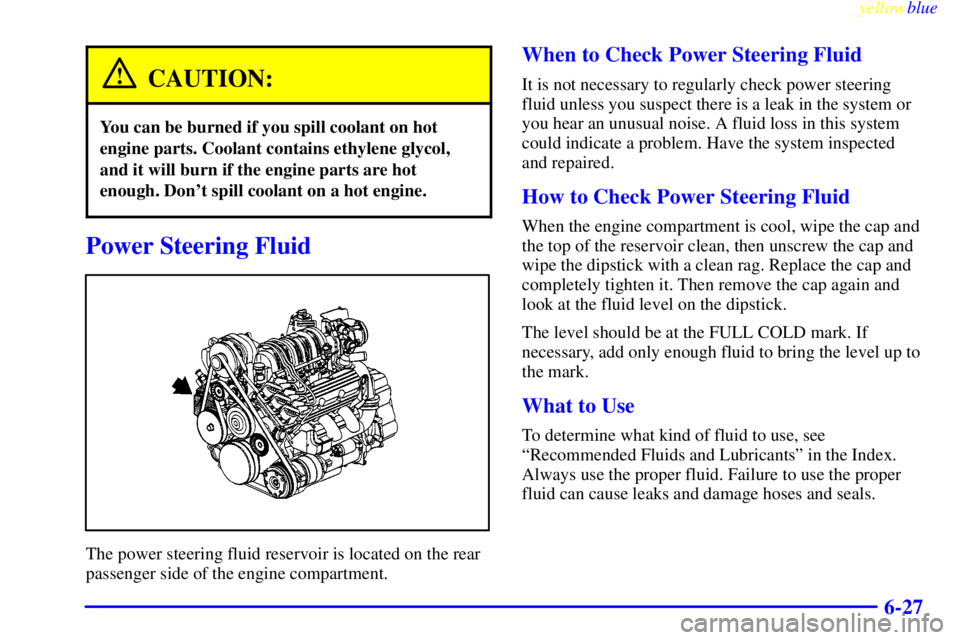Page 261 of 392
yellowblue
6-11 3800 Series II Engine (L36 - Code K)
When you open the hood, you'll see:
A. Engine Coolant
Recovery Tank
B. Battery
C. Radiator Pressure CapD. Engine Oil Dipstick
E. Engine Oil Fill Cap
F. Automatic Transaxle
Fluid DipstickG. Brake Master Cylinder
H. Air Cleaner
I. Windshield Washer
Fluid Reservoir
Page 262 of 392
yellowblue
6-12 3800 Supercharged Engine (L67 - Code 1) (If Equipped)
When you open the hood, you'll see:
A. Engine Coolant
Recovery Tank
B. Battery
C. Radiator Pressure CapD. Engine Oil Dipstick
E. Engine Oil Fill Cap
F. Automatic Transaxle
Fluid DipstickG. Brake Master Cylinder
H. Air Cleaner
I. Windshield Washer
Fluid Reservoir
Page 277 of 392

yellowblue
6-27
CAUTION:
You can be burned if you spill coolant on hot
engine parts. Coolant contains ethylene glycol,
and it will burn if the engine parts are hot
enough. Don't spill coolant on a hot engine.
Power Steering Fluid
The power steering fluid reservoir is located on the rear
passenger side of the engine compartment.
When to Check Power Steering Fluid
It is not necessary to regularly check power steering
fluid unless you suspect there is a leak in the system or
you hear an unusual noise. A fluid loss in this system
could indicate a problem. Have the system inspected
and repaired.
How to Check Power Steering Fluid
When the engine compartment is cool, wipe the cap and
the top of the reservoir clean, then unscrew the cap and
wipe the dipstick with a clean rag. Replace the cap and
completely tighten it. Then remove the cap again and
look at the fluid level on the dipstick.
The level should be at the FULL COLD mark. If
necessary, add only enough fluid to bring the level up to
the mark.
What to Use
To determine what kind of fluid to use, see
ªRecommended Fluids and Lubricantsº in the Index.
Always use the proper fluid. Failure to use the proper
fluid can cause leaks and damage hoses and seals.